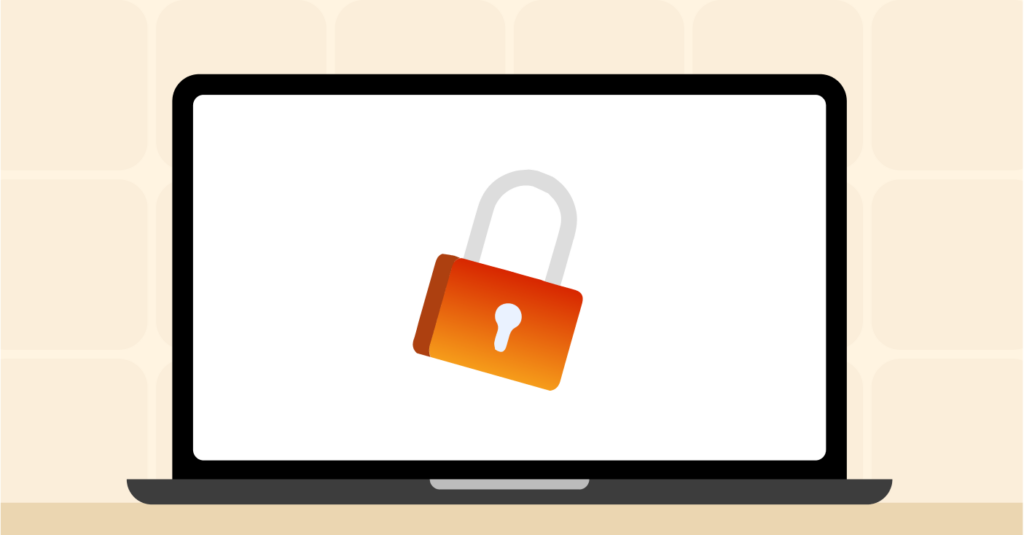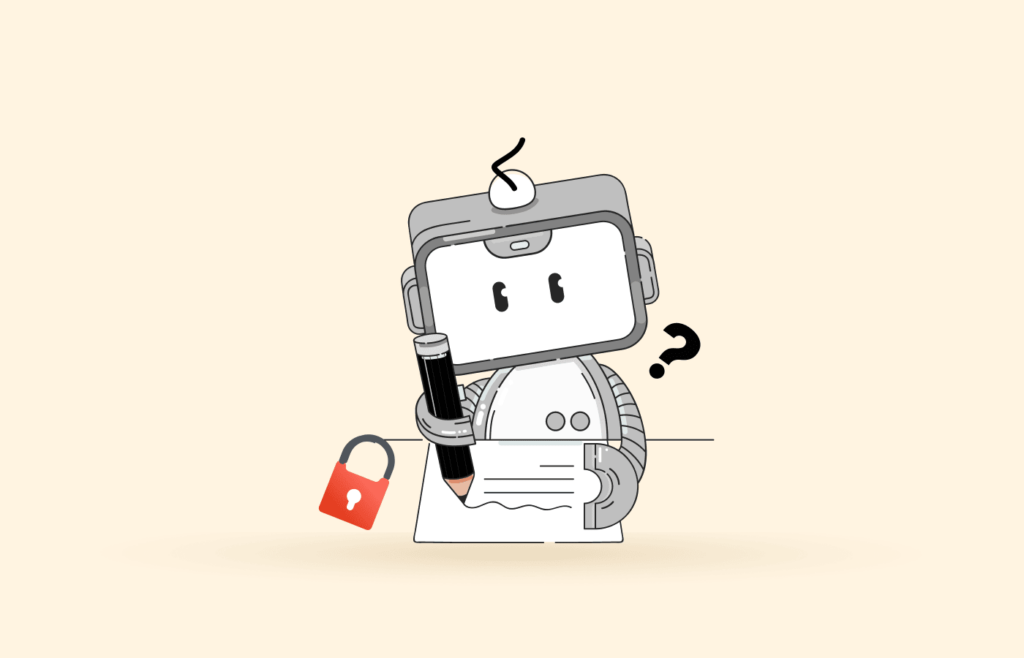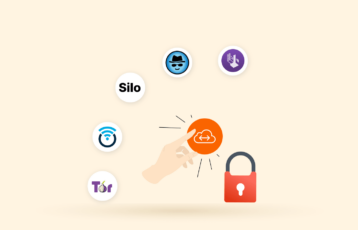Chatbots are one of those trends that have evolved into a generalized adoption. With all their annoyance, chatbots are here to stay, triggering the need to adopt subsequent security measures to prevent cyber threats.

The value chatbots have for companies is apparent. However, whenever a new trend shows up, it brings along new concerns regarding security. In today’s internet, security, privacy, and anonymity are paramount values for any user. This article will try to shed some light on these concerns. So, continue reading to learn to discuss them in detail.
Why is chatbot security important?

Chatbots can collect and convey sensitive data, personal or business. Therefore, security must be a vital priority as system implementation progresses. On the other hand, Chatbots can save a company a lot of money and considerably improve its client experience if done correctly — when they are designed securely from the beginning.
AI solutions allow a company to automate processes that previously needed the human element. It’s also suitable for providing answers to individual questions. Indeed, plenty of chatbots are little more than glorified interactive FAQs, and that’s enough for their users on either side. But others are more sophisticated and provide more than answers to specific queries.
As chatbots are becoming the internet’s new plague, we need to integrate them into the user experience securely. The measures a company can adopt in this regard are many and relatively simple. And the thing to realize is that everybody wins as chatbots become secure.
Security issues with chatbots
AI solutions are finally becoming commercial products. The systems currently deployed were pure science fiction only a few years ago. However, they can now imitate human speech to a degree and communicate successfully with customers.
Such systems are not cheap. Instead, coming up with one such system requires expertise and resource availability, making it very difficult for hackers to come up with theirs. That’s why malicious chatbots are hard to come by so far -however, that could only last for a short period. Time will tell.
Hacker exploitation is the first thing to worry about in chatbot security. Whenever a new trend or technology surfaces online, hackers start figuring out ways to harness its power for their purposes. Criminal hackers can deploy chatbots that persuade users to give away sensitive information or trick them into clicking a malicious link. These bots look normal, but they don’t help you. Instead, they get your personal and corporate information.
Internet users can protect themselves from these malicious chatbots by filtering their local traffic to exclude malicious activities. They can do this using cloud-based security suites, DNS firewalls, or a network filter that blocks IP addresses on a blocklist of known offenders.
However, some security vulnerabilities also exist that can affect a chatbot but have nothing to do with malicious bots. The first issue is when a system’s methods are compromised. Other vulnerabilities in chatbots arise from the human element, defective coding, and inadequate security practices. Unfortunately, these problems can’t be corrected by simply deploying a patch. Instead, they require a preventive approach incorporating Security Development Lifecycle into the development process.
The other type of security issues come from external threats like DDoS attacks, repudiation, spoofing, and other known techniques.
How can you ensure chatbot security

In the digital security area, two principles always hold: no solution is 100% effective, and you always start by getting the basics right. So what are the basics, we hear you ask? These:
- Implementation of network security protocols.
- Self-destructing messages.
- Authentications time-out.
- Using a Web Application Firewall (WAF).
- Biometric Authentication.
- Tight identity, access, and privileges management.
- End-to-end encryption.
- Two-factor access when available.
Those five measures are basic security standards. They require little effort, but their preventive nature makes the resulting increase in security significant.
Those security measures must follow the best practices for chatbot security.
1. Chatbot’s credentials
Your bot must have an exclusive account, period. Using an existing user’s credentials to run the bot doesn’t do. Yes, we know everybody is doing it. They’ll live to regret it. A separate account means individual permissions, logs, and credentials.
It eliminates any room for confusion when you need to run a forensic test or analysis, and it’s ultimately the safest way to go. It’s also safer for the corporation and the employees as their credentials do not get additional usage.
Also, customer activities should be kept separate from chatbot activities. It helps with tests, examinations, clarity, and transparency. It also increases efficiency.
2. End-to-end encryption
End-to-end encryption secures a communication channel so the information going back and forth can’t be intercepted. Since public key encryption is the dominant practice, only the two users at each end of the tunnel can use the data. For everybody else, it’s random noise.
The safety you gain with end-to-end encryption is such that even if a hacker finds its way to your servers, he won’t be able to retrieve any valuable data without the encryption keys. Of course, getting those keys is impossible because one of them is on the user’s side, far away from the server. The chatbot developing community has something to learn from the social media platforms. They have adopted end-to-end encryption to protect themselves from digital attacks.
3. Two-factor authentication
Two-factor authentication is becoming the rule in more and more digital services because it works. For example, it helps guarantee chatbot security as it verifies a user’s credentials through two separate channels concurrently. However, it requires an additional communication channel, usually an email or a mobile phone.
When the second code passes the authentication process, the user gains back his user rights. While it sounds too ordinary or boring, it’s a powerful security tool. It’s almost equivalent to having users physically there, passing the authorization test. That is why this kind of authentication is snowballing. The early adopters are the companies that need to ensure security, such as banking and financial services.
4. Biometric authentication
This method uses a piece of biological data to authenticate users. It is not as Sci-Fi as it sounds. Digital fingerprint authentication has been around for decades and is one of the biometric authentication methods available today. But there are other methods. Iris and retinal scans are becoming more popular and safer than fingerprints because there’s no physical contact with the user’s body and device.
5. Time-based authentication
This method gives users the user of its system rights for a given period only. When the period finishes, the system logs the user out. This method improves security by preventing the typical repetitive attempts a hacker must make when attacking.
6. Employee education
Digital security remains a somewhat arcane subject for geeks and paranoids. That is unfortunate because it’s so important.
Remember that your security chain is as strong as your weakest link. For example, suppose your employees do not practice good security in their work because they don’t know or care about that. In that case, they will be the weakest link, and no amount of advanced technology will amend that.
Education is the solution. You need your employees to know and understand why digital security matters in general, not just as it pertains to the chatbot system. Of course, it will be relevant to make them aware of the security practices for the chatbot. Still, if you don’t engage them in an integrated security mindset, you’ll always have a security problem at this level.
7. Embrace security protocols
You probably keep reading acronyms like TLS, HTTPS, and SSL. These are digital security protocols, and they’re your friends. Learn everything about them, understand them, adopt them, and let them do the work for you.
They work across platforms. They add several layers of encryption, as well as other security principles.
8. Secure bot management
The way you manage your bot is critical for security purposes. This is no surprise.
Ensure that your chatbot is an excellent central dashboard that allows your admin to see everything at a glance in a centralized way. Logs are essential because they allow your team to trace your bot’s activity and dig deeper when problems arise.
Top chatbot vulnerabilities today

1. Cross-site scripting
In any typical chat window, the user writes something in the input box and then hits enter. The next step is for the chatbot to “swallow” this text and mirror it in the main chat window. There’s the rub.
A malicious user can type in a piece of Javascript code and have the website’s engine execute it. So if this is an open vulnerability in your system, the attacker can take over the system if he’s proficient enough.
Fortunately, it’s easy to solve cross-site scripting vulnerability by simple input validation — which you should always be practicing.
2. SQL injection
A SQL injection attack gives your bot some malicious content for it to consider part of a legitimate piece of information. This vulnerability is not a chatbot-exclusive problem, but it’s present in any web app that uses databases.
Again, input validation will save you all the problems. Make sure that no regular expressions are made through your input, and trust your tokenizers.
3. Denial of Service (DoS)
AI processes are not light. They need a high amount of computations. However, Natural Language Understanding algorithms are quite taxing to any system, so a server doesn’t need to run many such processes for the resources to run out and become unavailable.
So a hacker looking to bring your system down can achieve so by simply having a lot of users feeding your chatbot with text quickly. Thus forcing your server to deny the service to legitimate users.
We will not give you details about the solutions to this problem. However, DDoS attacks are almost a well-documented issue in digital security, and there are whole books on preventing them. So, we will tell you here that chatbots apply the same preventive measures for any type of DDoS attack.
What are the risks of using chatbots?

A team developing a new chatbot will have to deal with the following risks as the project moves forward:
- Speech recognition
- Not conversational answers
- Unauthentic personalization
- High efficiency doesn’t translate into high effectiveness
- No advantages over IVR
FAQs
Yes, chatbots can be hacked. This is why having a chatbot security policy is so important.
DDoS (Denial of service) attacks are the main concern with chatbots. The AI process is very taxing to the hardware, which allows a wrongdoer to carry out a successful DDoS with relatively low resources.
Other than DDoS, malware strikes and other known security and privacy issues can also be a problem for chatbots.
There are three main types of chatbots, namely, simple: task-specific rule-based bots. Smart: uses AI to simulate a conversation with human beings. Hybrid: combines the capabilities of simple and smart bot types.





